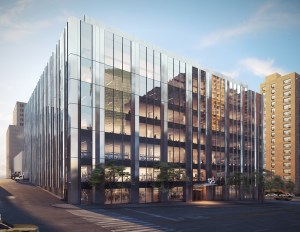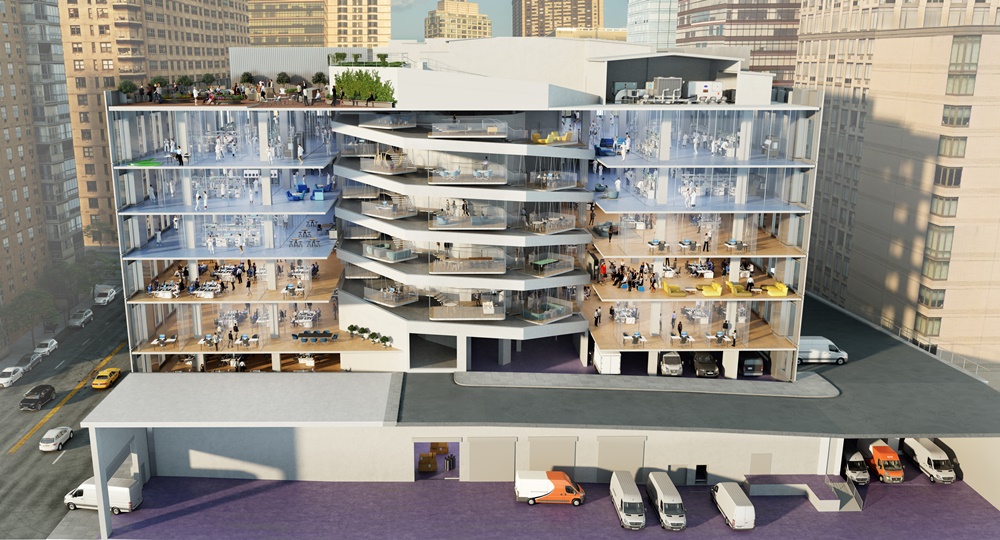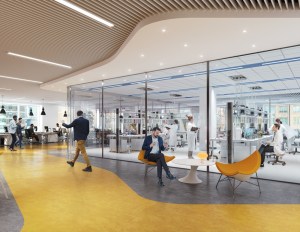NYC Enters Life Sciences’ Big League
Taconic Partners' Matt Weir on what's driving the city's burgeoning biotech sector.

125 West End Avenue. Rendering courtesy of Taconic Partners
The pandemic has created unprecedented demand for commercial lab space across the New York metro area, accelerated by the race for a COVID-19 vaccine. This increased demand has also pushed the city—which previously lagged behind life science powerhouses like Boston and San Francisco—to the forefront of the niche sector.
Multiple government programs are incentivizing more development, including the recently launched LifeSci NYC. The city initiative launched with an initial investment of $500 million, which was increased last June to $1 billion. Given this support, developers are seizing the opportunity.
READ ALSO: NYC’s Office Landscape Is Changing Fast. What’s Next?
Taconic Partners is the company behind one of the most ambitious life science projects in Manhattan. The firm is redeveloping a former Chrysler auto showroom into a life science complex on Manhattan’s West Side.
“This building is innovative in every sense and a prototype for responsible life sciences design and efficiency,” Matt Weir, the company’s executive vice president, told Commercial Property Executive about the project. In the interview below, Weir shares his thoughts on New York City’s emerging life science sector and the way Taconic’s latest project reflects current trends.
How much has demand for life sciences space grown in NYC in the past couple of years?

Matt Weir, Executive Vice President, Taconic Partners. Image courtesy of Taconic Partners
Weir: New York City’s biotech and life sciences sectors are expanding in unprecedented ways. While the pandemic surely put a spotlight on the sector, as a firm we saw the potential long before this. The city’s unparalleled access to talent, leading academic medical institutions, large life science workforce and growing venture capital activity are among the reasons why Taconic is targeting over $2 billion worth of life science investments citywide.
What unique needs do life science companies have following the pandemic?
Weir: Tenants in the sector have unique real estate needs—upgraded mechanical infrastructure, tall ceiling heights and robust floor loads—and users are distinct from conventional office tenants. This has helped isolate the life science sector from the adverse impacts to the broader commercial real estate market brought on by the work-from-home movement.
The research and facilities being conducted in these spaces are not able to be performed remotely or at home. Thus, real estate serving these users must be designed and managed to meet particular needs such as fume exhaust, emergency power and chemical storage and removal.
In which way has Taconic catered to these needs through its projects?
Weir: At Hudson Research Center, for example, we’re offering pre-built wet lab space for prospective tenants to see and truly get a feel for what it would be like working in the space. These facilities include everything a life sciences tenant needs to “plug-and-play,” which is especially crucial for early-stage research companies.
Give us some details about the most representative life science projects you are currently working on, such as the conversion of a former auto showroom in Manhattan into a life science hub.
Weir: The building at 125 West End Avenue, purchased by Taconic in 2019 with Nuveen, is a major milestone toward Taconic’s aim to commit billions worth of life science investments citywide.
We enlisted engineering firm JB&B and architect Perkins+Will New York to handle a complete gut renovation which will capitalize on existing features including high ceilings, multiple points of direct loading access and an original automotive helix, which once allowed for cars to be driven from the ground floor all the way to the roof of the building. The Helix will be repurposed into a social hub that will serve to connect all of the tenants on a floor and truly promote collaboration.

125 West End Avenue. Rendering courtesy of Taconic Partners
The building has 50,000-square-foot floorplates, 13- to 16-foot ceiling heights, heavy floor loads and multi-level access points. The labs will also include cutting-edge environmental sustainability features while tracking LEED Gold certification in line with new carbon reducing and energy performance guidelines in New York.
In which way do these developments align with NYC’s current initiatives to expand the local life science sector?
Weir: Mayor de Blasio and the NYC Economic Development Corp. recently announced plans to double the City’s $500 million investment in life sciences to $1 billion as part of LifeSci NYC, a commitment launched by the mayor to create jobs and establish New York City as the global leader in life sciences. This expanded initiative is expected to generate 40,000 jobs.
Clearly, the expansion of life sciences is a priority for the city, as it is for Taconic. We believe in New York City as a hub for the life sciences and biotech industry and are committed to its growth. Our projects are a reflection of that.
Tell us more about the emerging life science subclusters within NYC.

Inside 125 West End Avenue. Rendering courtesy of Taconic Partners
Weir: Until recently, NYC was not a target for life sciences growth; Growth of the sector is largely determinate on the functionality of the real estate created to suit the need. Other cities such as Boston and San Francisco have historically been ahead of the game but with current projects, it solidifies the start of a new real estate trend that may help to shape and heal the city.
End-users of research laboratory spaces seek to locate not only with academic institutions at the forefront of life sciences, but also tend to cluster in areas where all forms of technology research are being pursued.
How do you see the life sciences sector in NYC going forward?
Weir: As the urbanization trend continues, the growing demand for life sciences spaces in top live-work-play cities is being driven by the need to attract the best and brightest talent. Which is why New York City is positioned to benefit from this demand. In the past year alone, we have seen new real estate players exploring this market. Going forward, we expect to see more institutional investors looking to participate in life sciences real estate opportunities.







You must be logged in to post a comment.